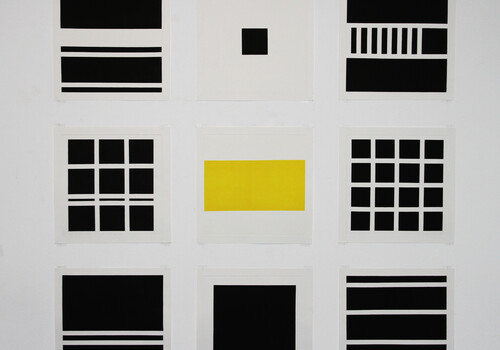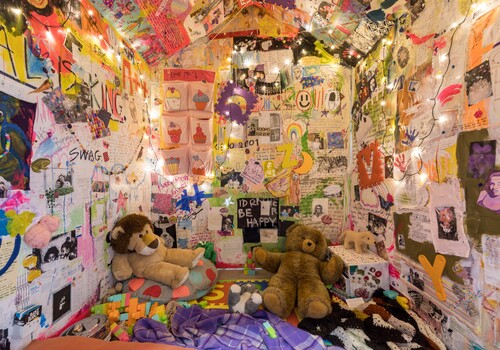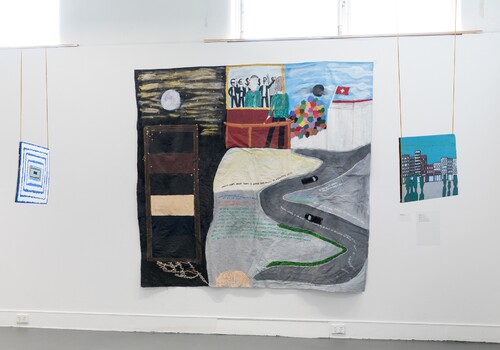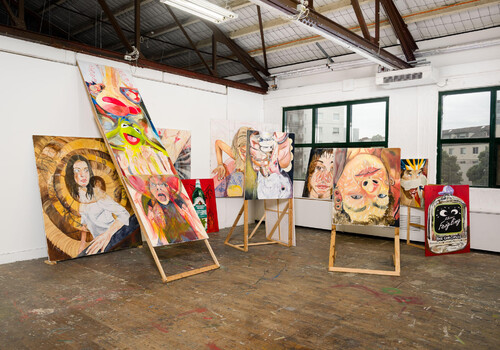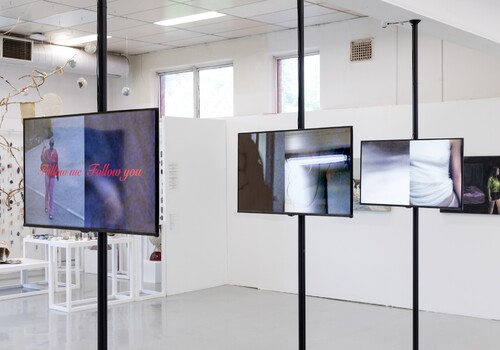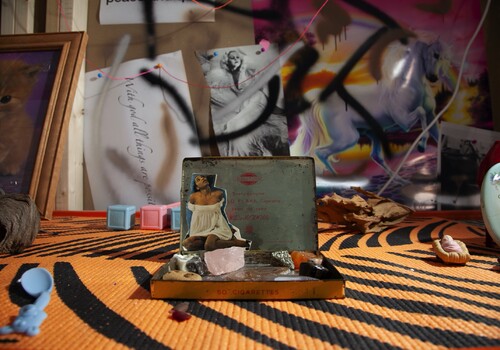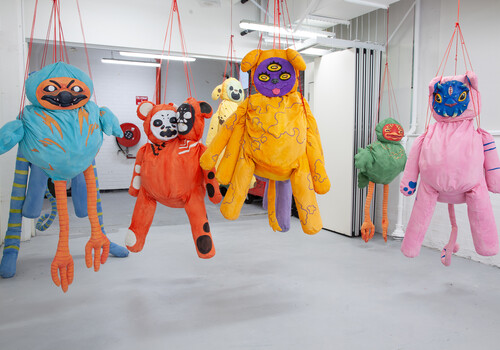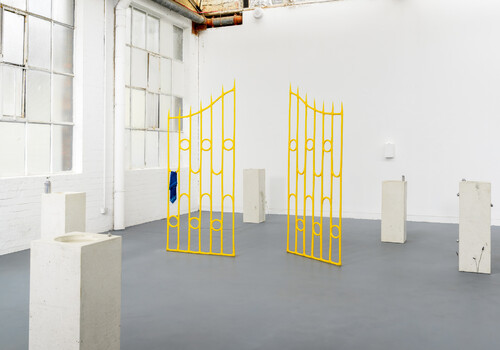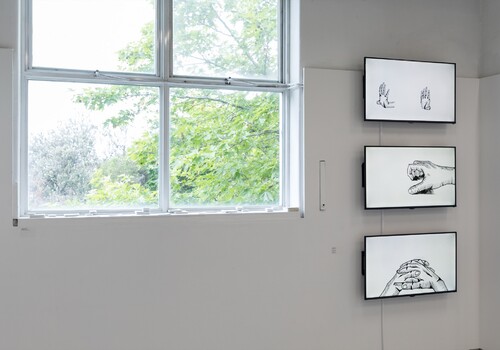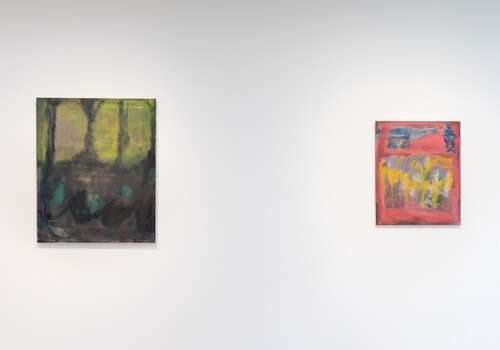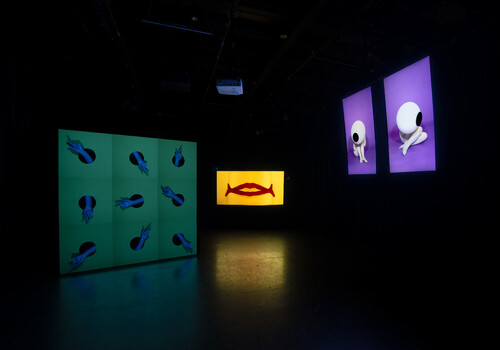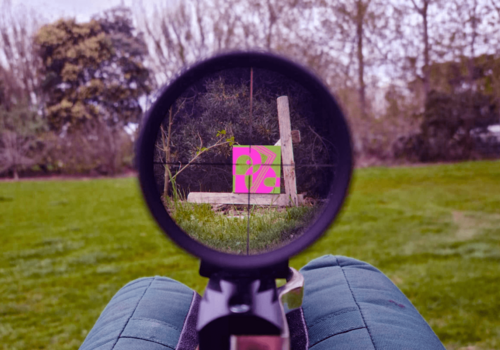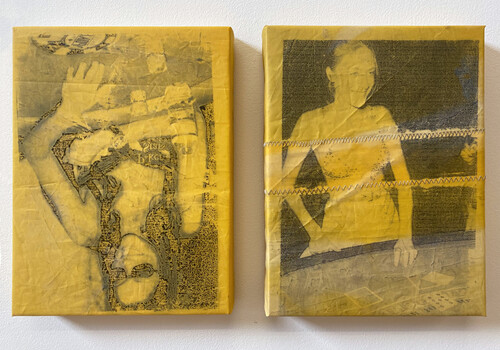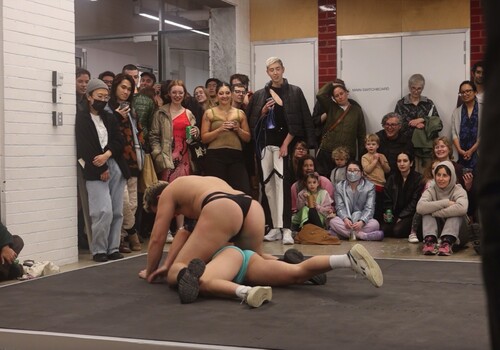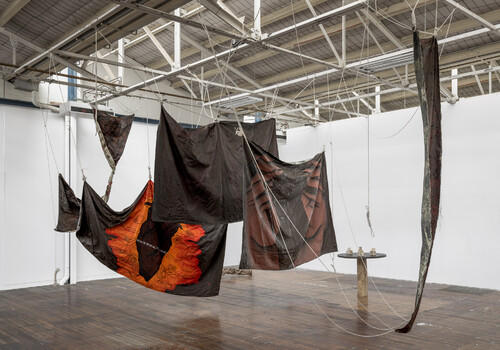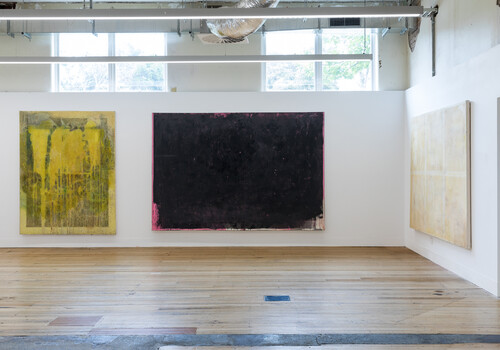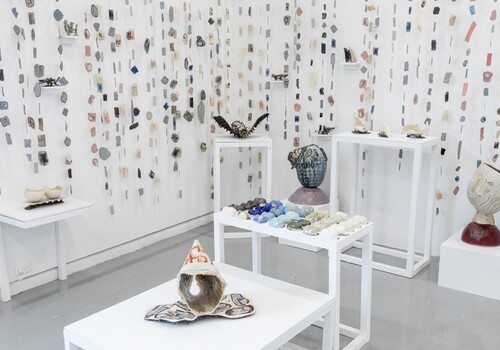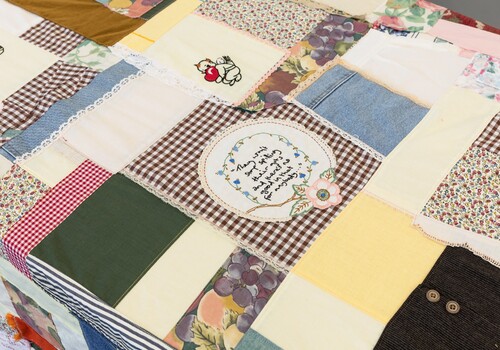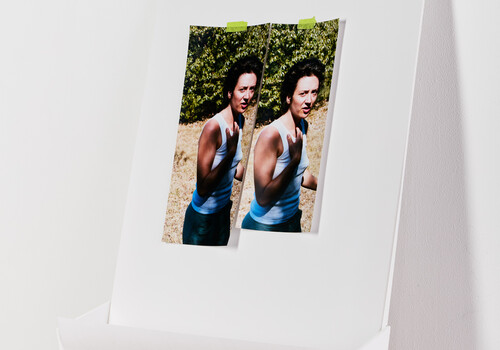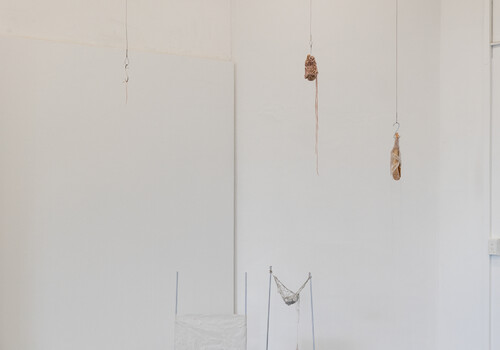Sculpture, Victorian College of the Arts
By Lily Beamish
How can you make tangible the deeply personal feeling of otherness? VCA sculpture graduates Hugh Crowley and Jingxuan Chen articulate these points of difference in their graduate works, which embody their individual experience in the space of the “other”.
Adjacent to the painting and photography department is a small square room. You could easily walk past it, and I almost did, save for the bright red light bleeding out from the doorway. Inside is a large wooden bar (mahogany maybe?) with a small tray of alcohol setting the mood. Am I about to be seduced? Maybe inappropriately propositioned by a cashed-up executive?
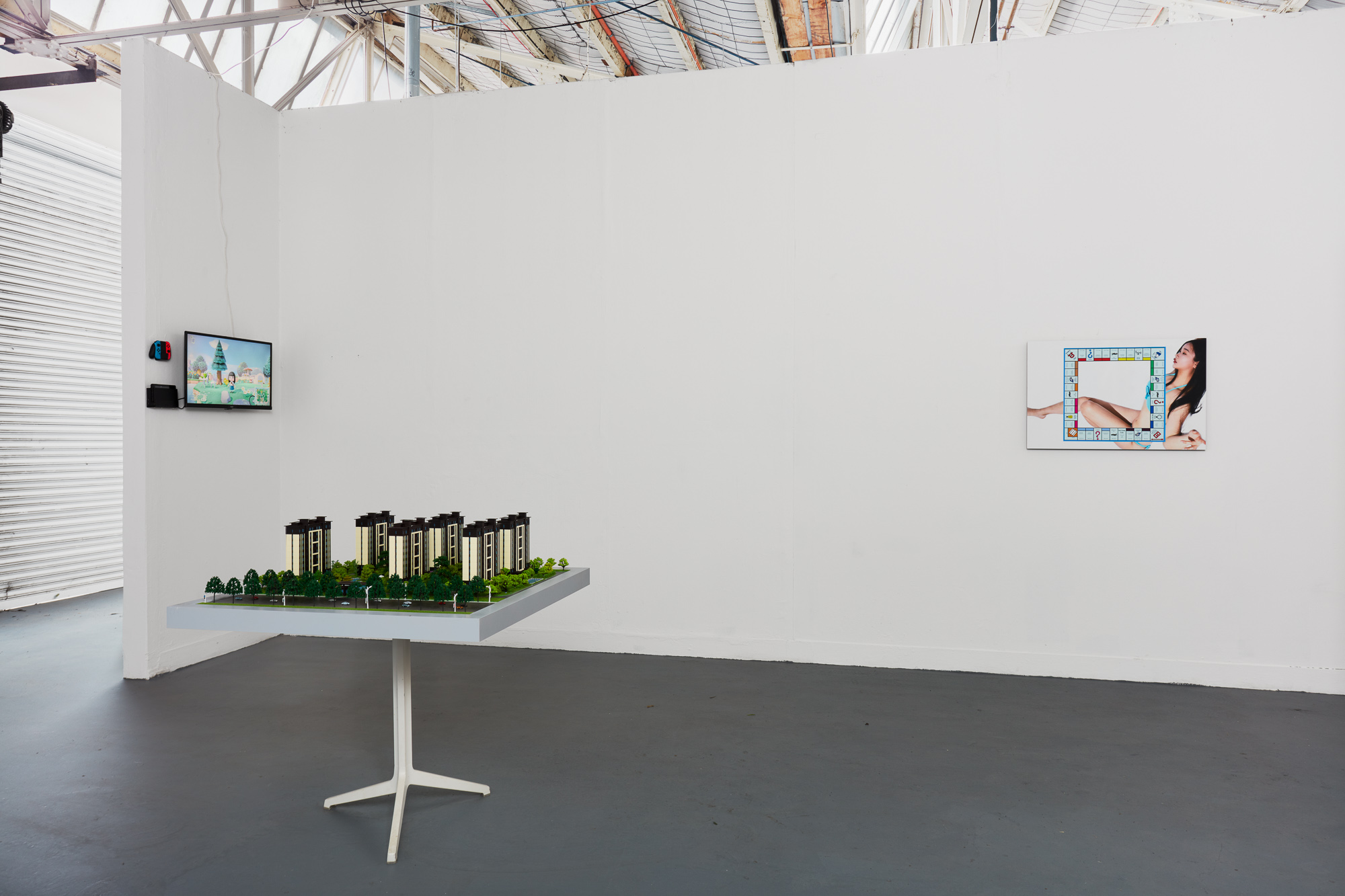
These are the tensions that Chen’s installation Transformation Vol. 2: A Romantic Incident (2022) explores. The air hostess, the female government worker and the Japanese school girl dominate the screen, each an archetypical representation of East Asian womanhood in contemporary media. The videos are accompanied by English closed captions as if Chen is speaking to me. How could she be talking to me? I experience womanhood, but Chen’s work goes deeper than gender. It draws on racial stereotypes ingrained within Australian culture and confronts the audience with its own presumptions.
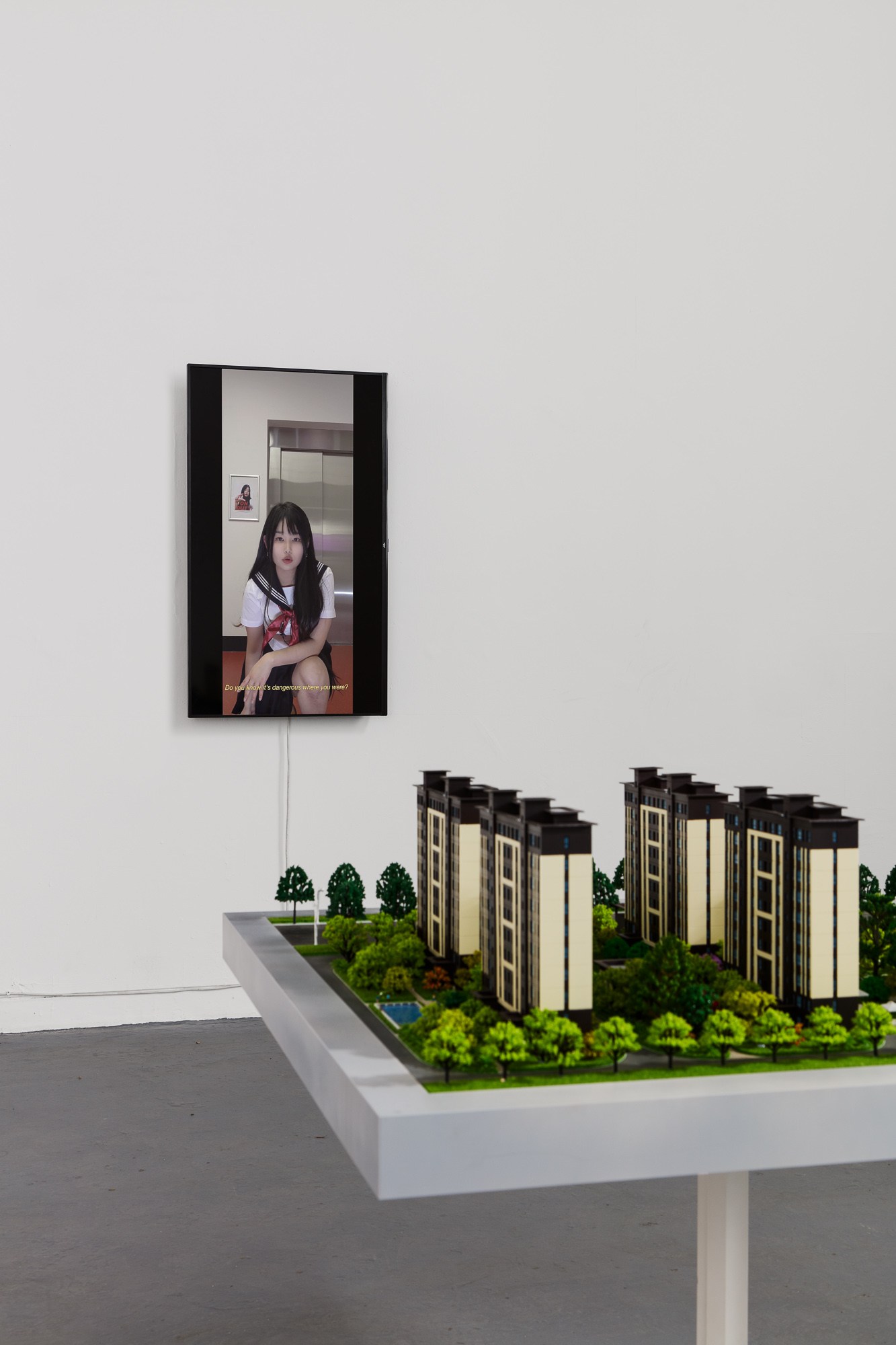
Occupying the back corner of the sculpture department, Crowley’s installation Cruising Utopia (2022) merges the effervescent and ceaseless nature of the organic, alongside the vulgar, ornamental and fragile. Five concrete masses inhabit the space. One reads, “I WANT TO CUM IN YOUR HEART”, written in scratchy black marker. It is accompanied by the fragile indentation of long summer grass and thick silver interlocked rings. Joined together they illustrate a sense of tension between the present and the future. We’ve all been there. Yet these sculptures aren’t nihilistic; they aren’t filled with that “what the fuck am I going to do with an art degree” sense of dread. Instead of lamenting lost futures or longing for better ones, Crowley’s sculptures reverentially explore the quotidian.
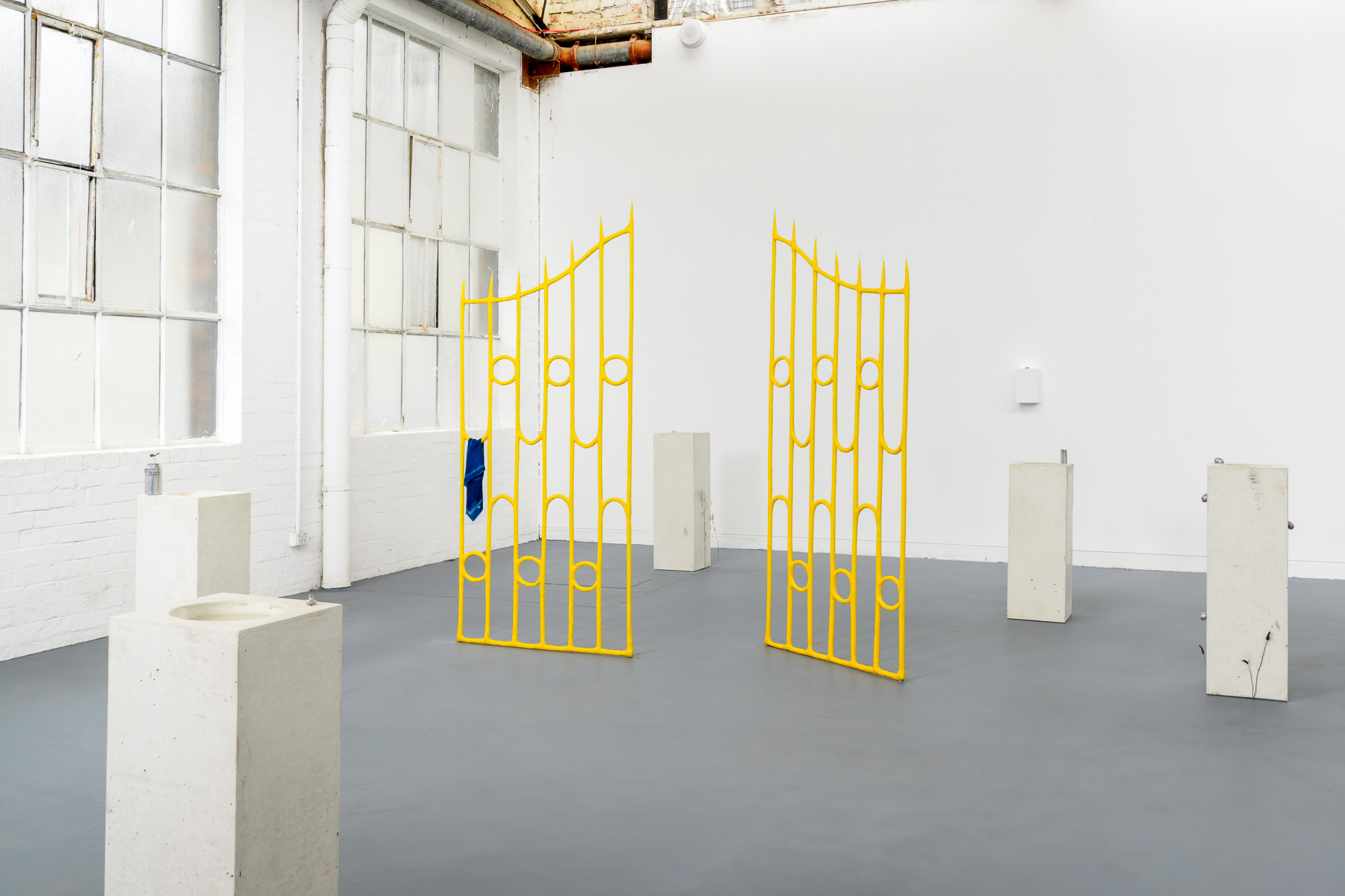
Among the cement, stands a bright yellow doorway. Ajar, it beckons me in. At first, Giving and Receiving (2022) suggests the mottled finish of a beginner’s metal work with its slick yellow posts coming to a sharp end like the last tendril of hot glue. I assumed this decision was stylistic—rough and ready, very VCA—however, on closer inspection, these jagged ends reveal themselves to be candle wicks and the glossy finish perspiring wax. Moulded in the style of intricate wrought iron fences, Crowley pastiches the colonial and federation style fences that adorn Melbournian streets through warping the wax into phallic designs, tipping his hat to the rich history of queer coding within art.
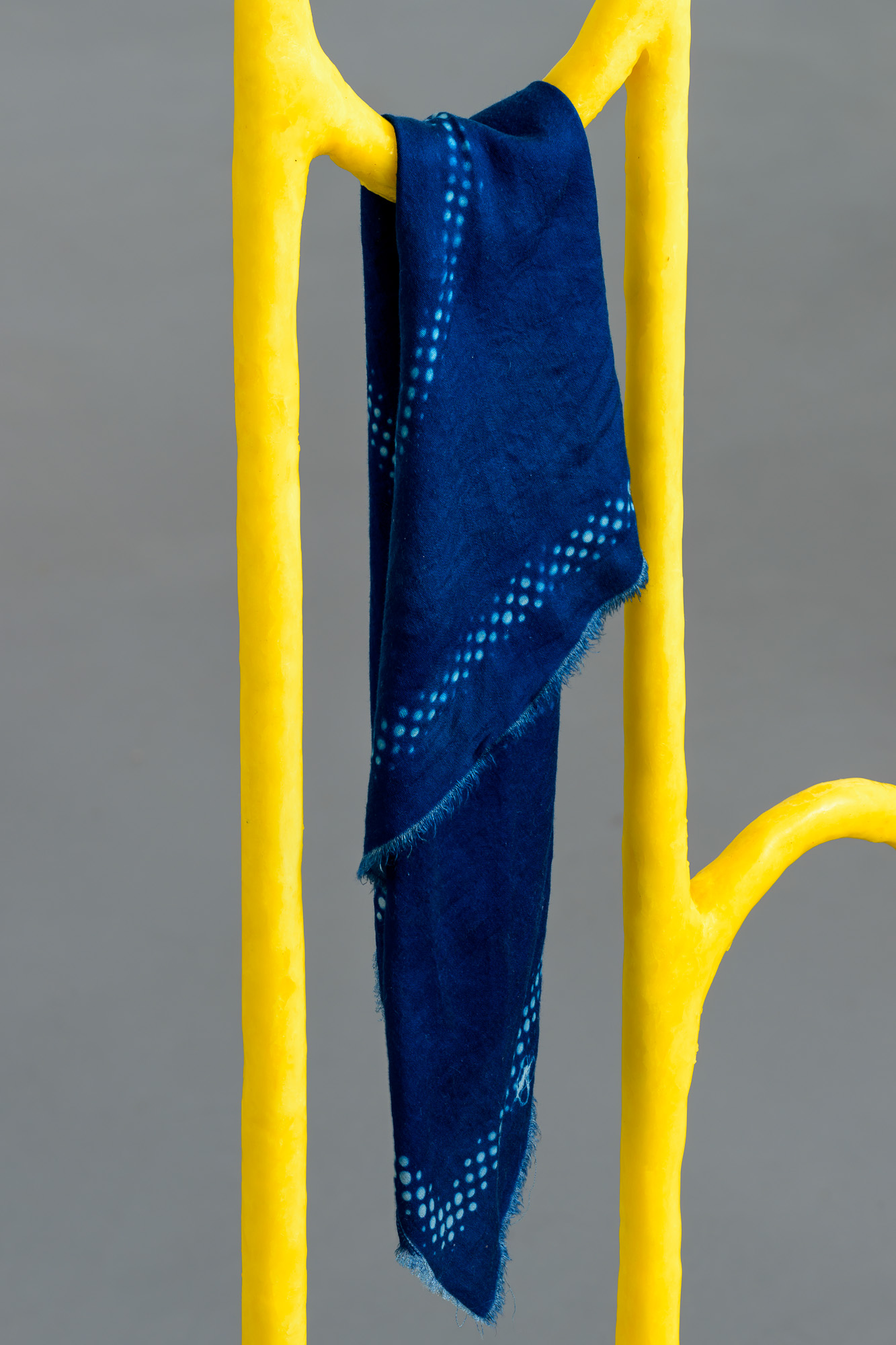
Alongside its social authority, graduate exhibitions at the VCA carry a certain risk of artistic homogenisation. However, this notion of the master narrative is not confined within the walls of the VCA. Rather, it reflects the broader culture of editing, critique and gatekeeping integral to the institutional structures of the artworld. Out of this pedagogical echo chamber rises the graduate work of Crowley and Chen. These are two individual practices so deeply grounded in exploring their experience in the realm of “the other” that they defy aesthetic pigeonholing.
Lily Beamish is an emerging writer and curator based in Naarm (Melbourne). She is currently completing her Master of Art Curatorship at the University of Melbourne and takes specific interest in the intersection between spatially informed art, lifestyle and community.
